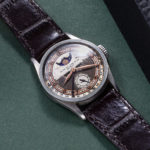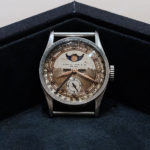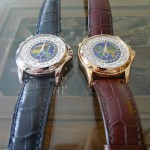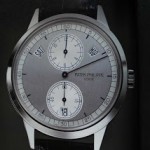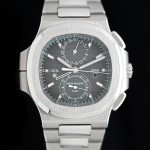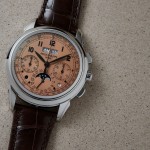Exclusive: Under the Dial of the Patek Philippe Owned by the Last Emperor of China
The calibre of Puyi's Calatrava ref. 96QL.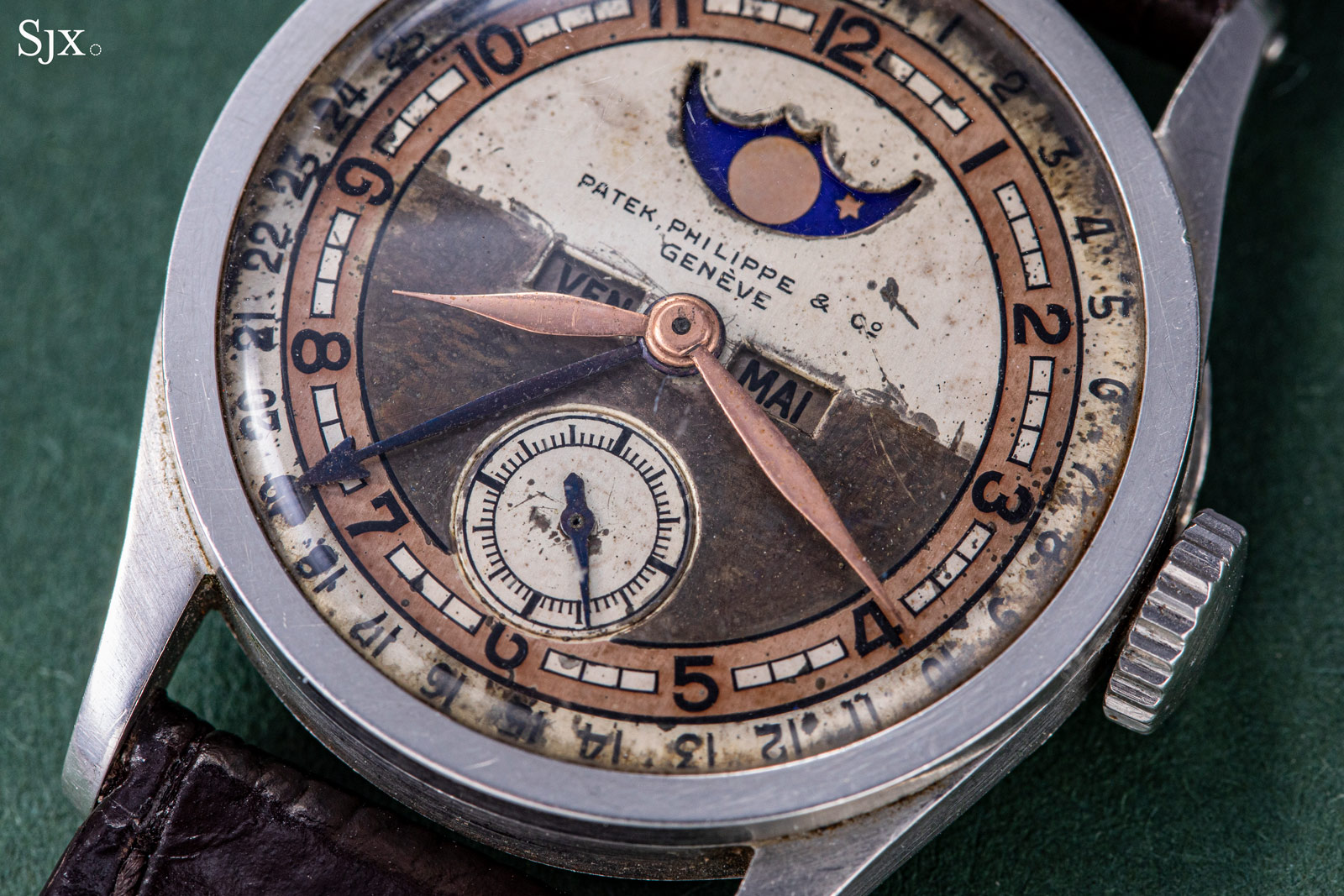
As I was examining the Patek Philippe ref. 96QL once owned by the last Emperor of China, I wondered about the state of the movement. The watch is clearly old – it was sold in almost a century ago – and was not running.
Phillips wasn’t able to show me the movement on the spot, understandably considering the value of the watch, although they promised they would get me some information shortly.
Their response was more than I expected. Taking the form of a forensic report detailing the materials and details of the watch – right down to a X-ray spectrographic analysis of the dial – the information reveals much about the watch.
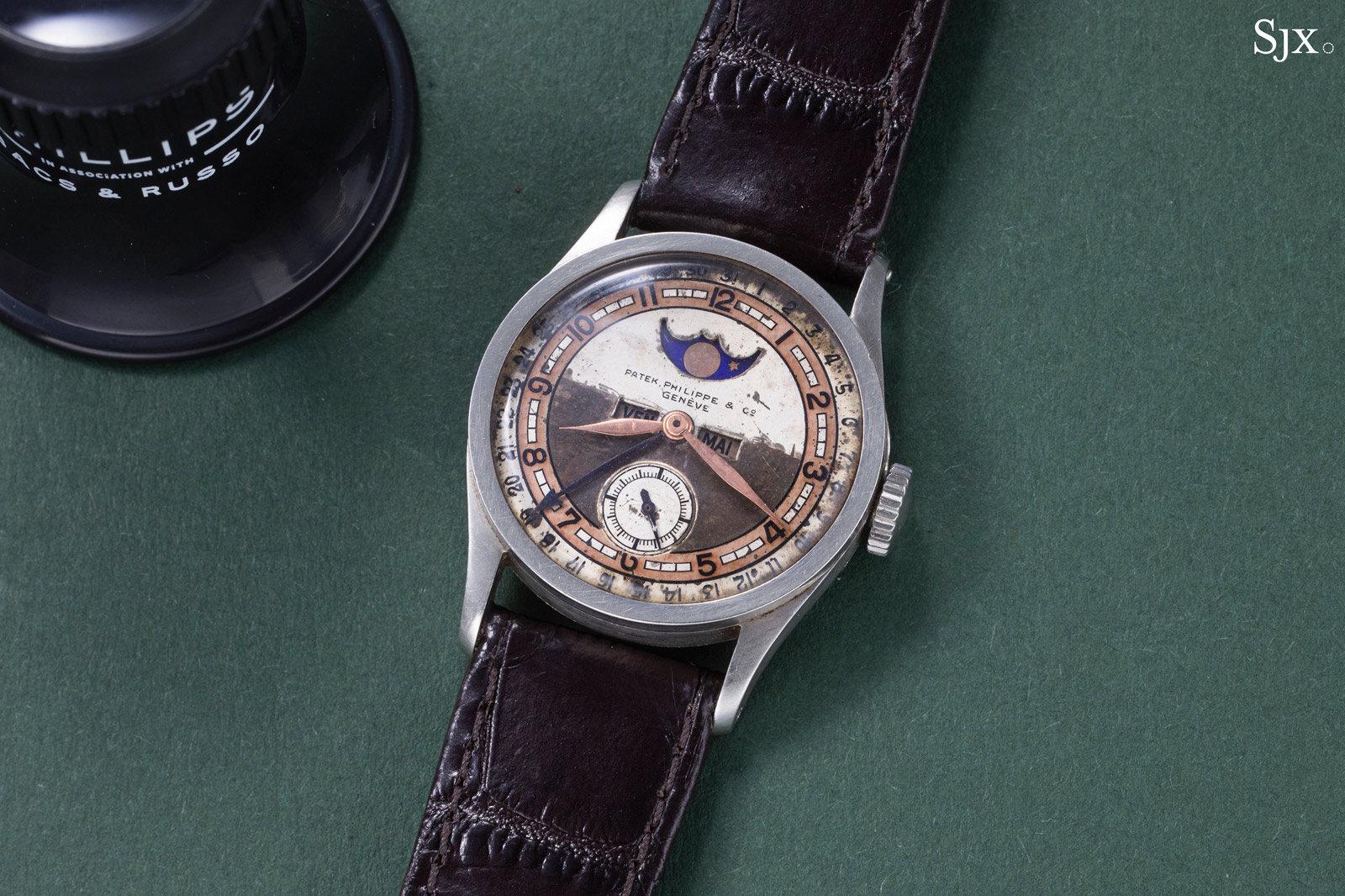
To start with, the spectrograph of the reverse of the dial reveals it is 92.4% silver, 6.94% copper, with the rest comprised of silver and gold. This finally answer the long-ago question posed by Puyi when he tasked his manservant “Big Li” to scrape off the dial’s coating in order to see if it is platinum like the case. It is but a brass dial plated in silver.
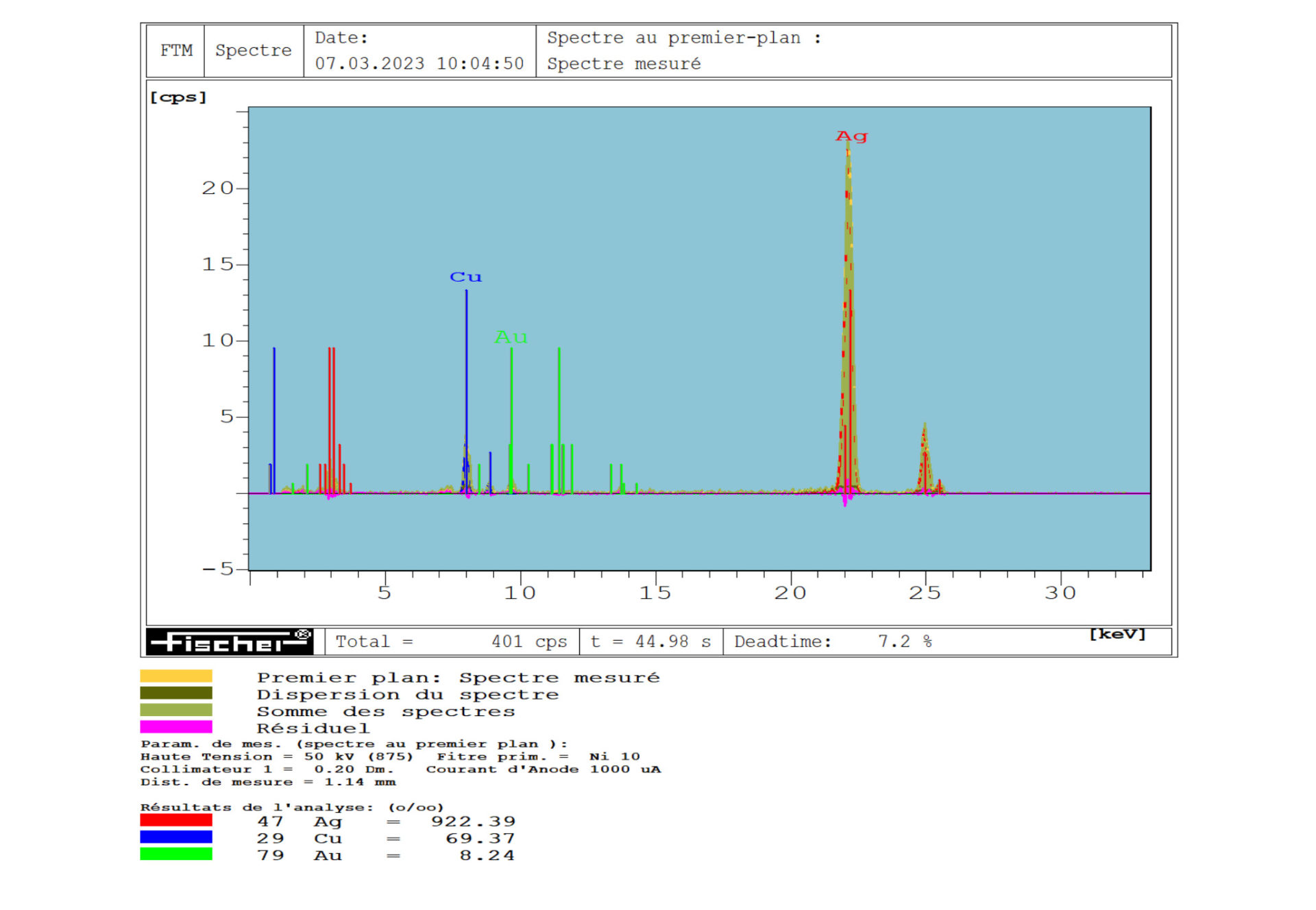
The analysis of the dial’s back
Inside the platinum case is an 11”’ movement that likely began as an ebauche from LeCoultre that was then completed by Victorin Piguet, which produced the simple calendar module on the top. The movement was then likely sent to Patek Philippe, which applied the finishing touches and cased it.
The back of the movement is evidently classical, with the flowing bridges that were then the norm in movement design. It is also finished as high-end movements were at the time, which is to say by hand, although age has taken the sheen off the components.
The movement number, “198299”, is engraved on the barrel bridge, which reveals the wolf’s teeth on the barrel ratchet and crown wheels, an anachronistic detail that would soon no longer be found in wristwatch movements.
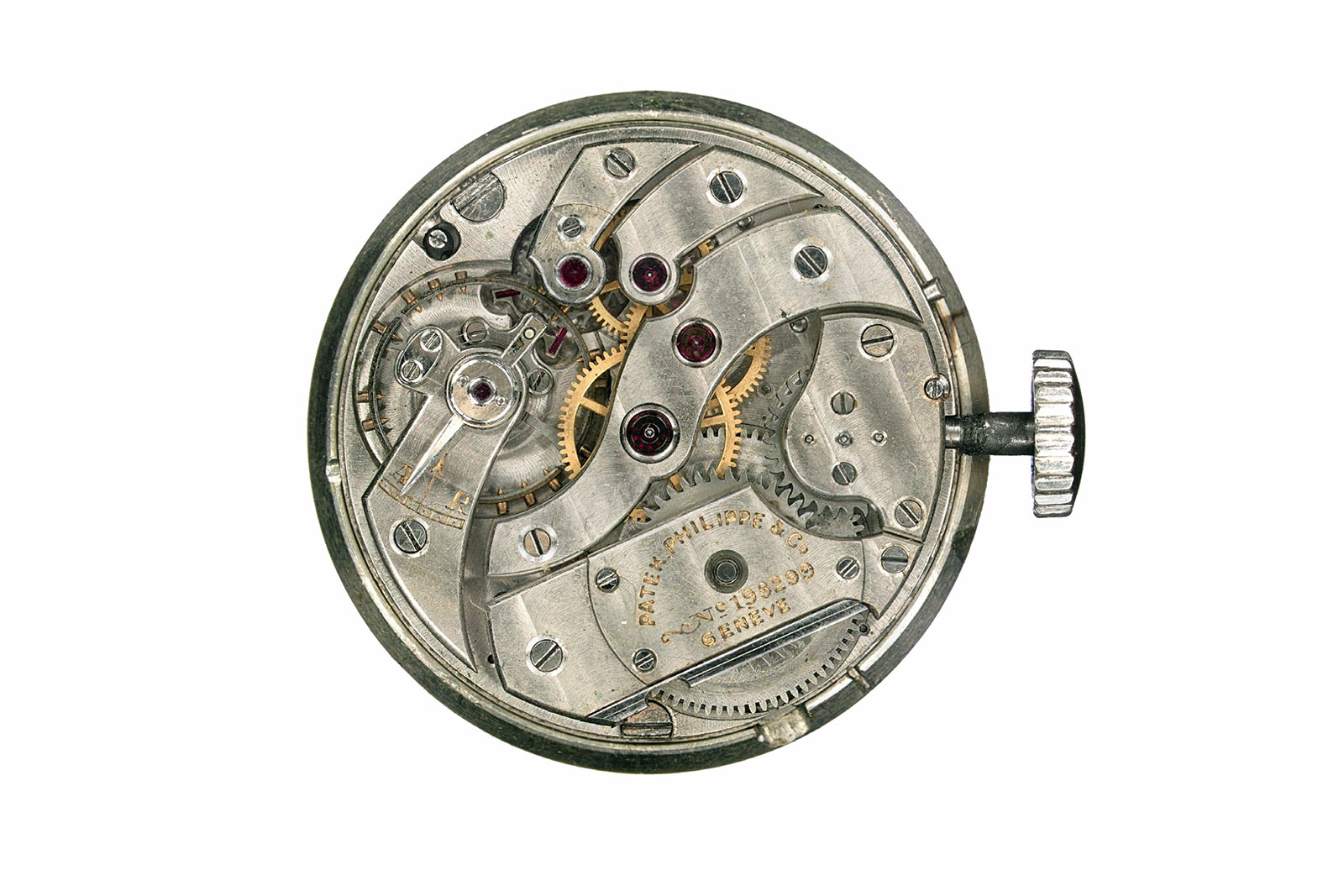
Removing the dial reveals the calendar mechanism that is rudimentary by modern standards, although the steel levers for the calendar are particularly fine in form, sporting graining on the top and chamfered edges.
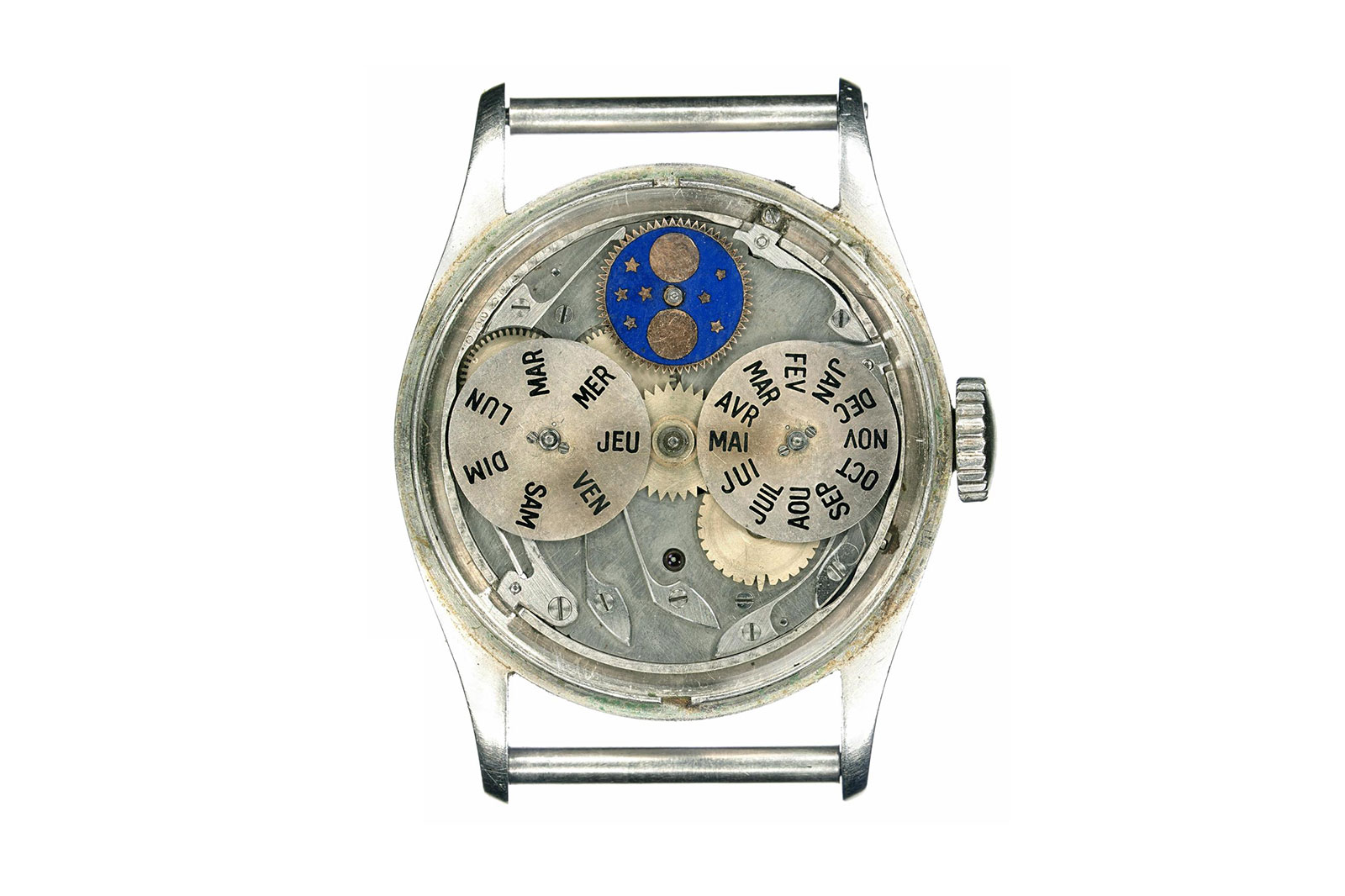
The base plate under the dial is similarly decorated to a high level with perlage that varies in size according to the surface. But it also shows significant staining, probably from a long-ago exposure to moisture.
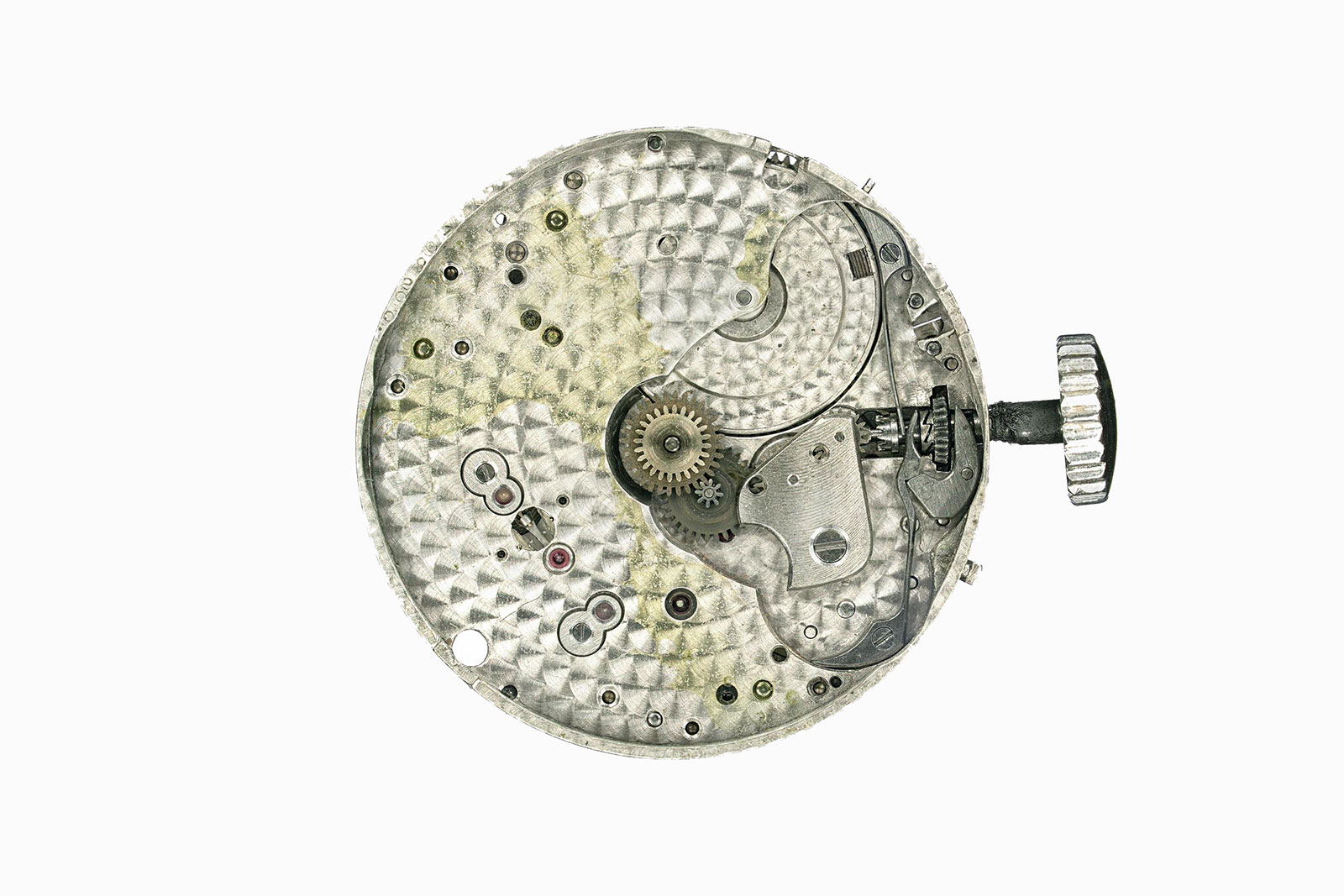
The calendar mechanism is a discrete module that is easily removed from the base calibre. One detail is particularly notable, namely the prominent darkening of the areas around “VEN” and “MAI” on the calendar discs. This indicates the movement was left stationary for decades, long enough that exposure to sunlight caused the discs to darken at just two spots.
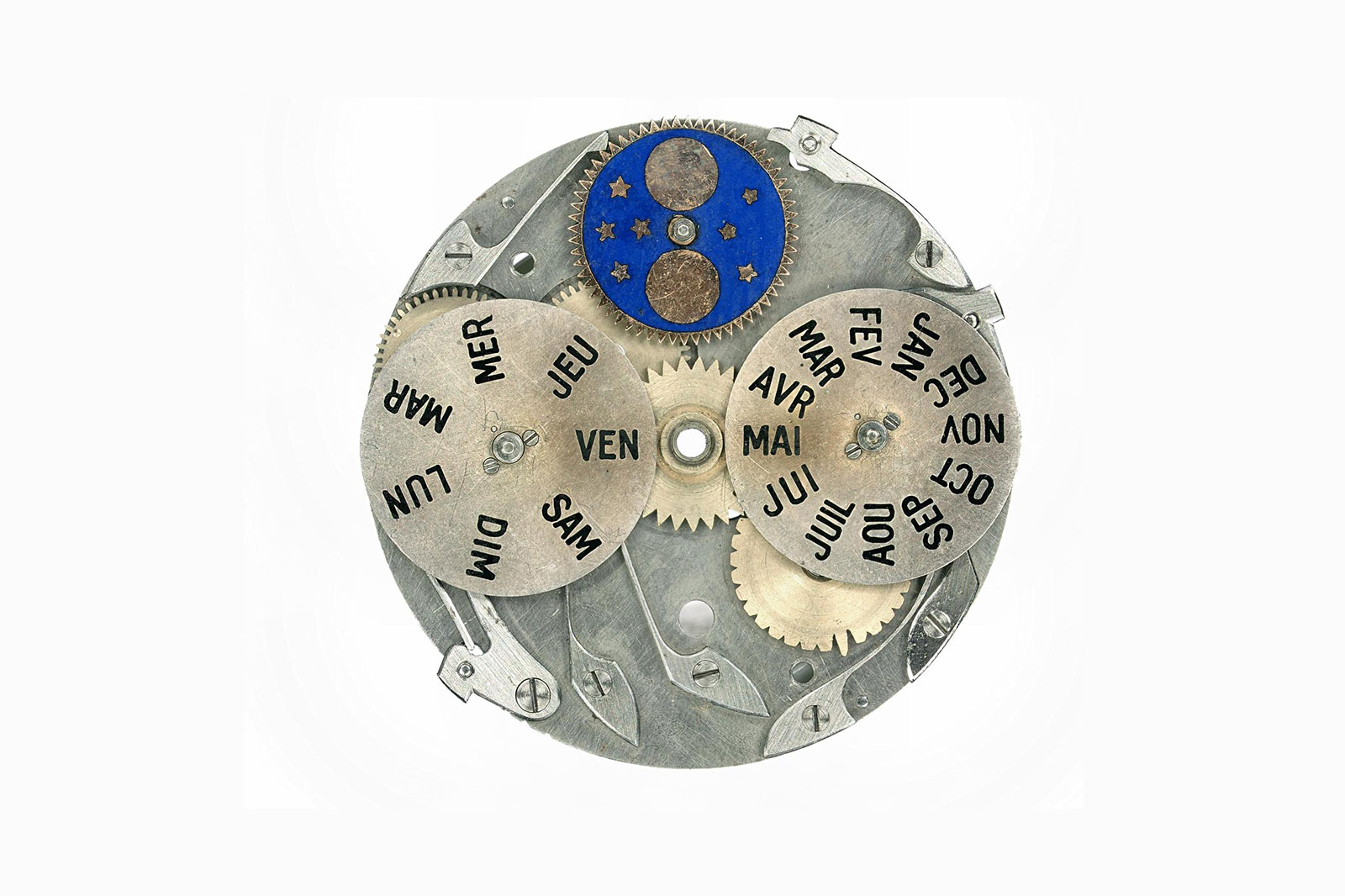
The calendar stopped on a Friday (Vendredi) in May (Mai) for a long, long time
Interestingly, the underside of the twin calendar discs feature a series of numbers scratched onto their surface. Up close, the numbers are recognisable as the movement number, “198299”, a detail that means they are original to the movement.
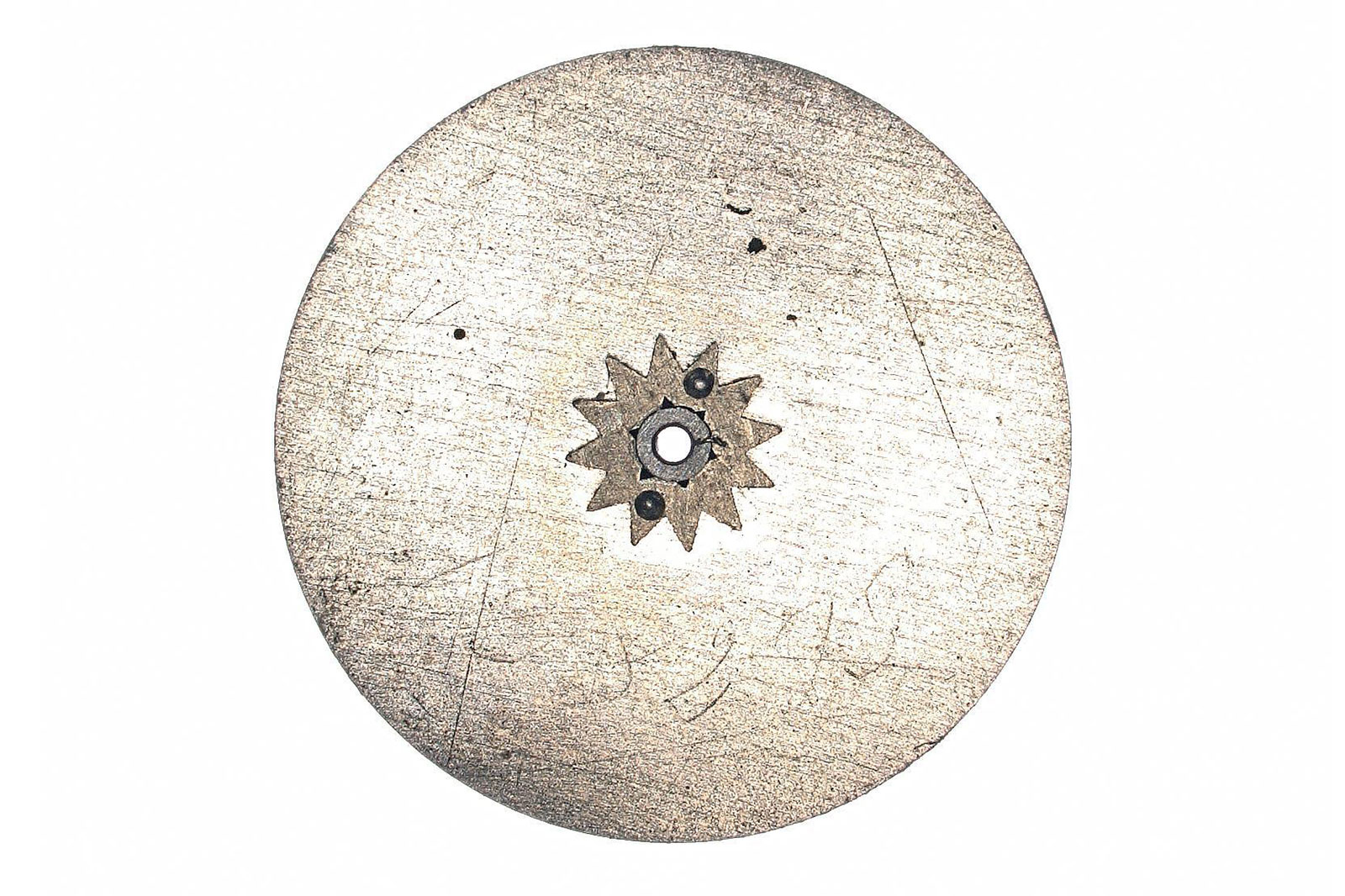
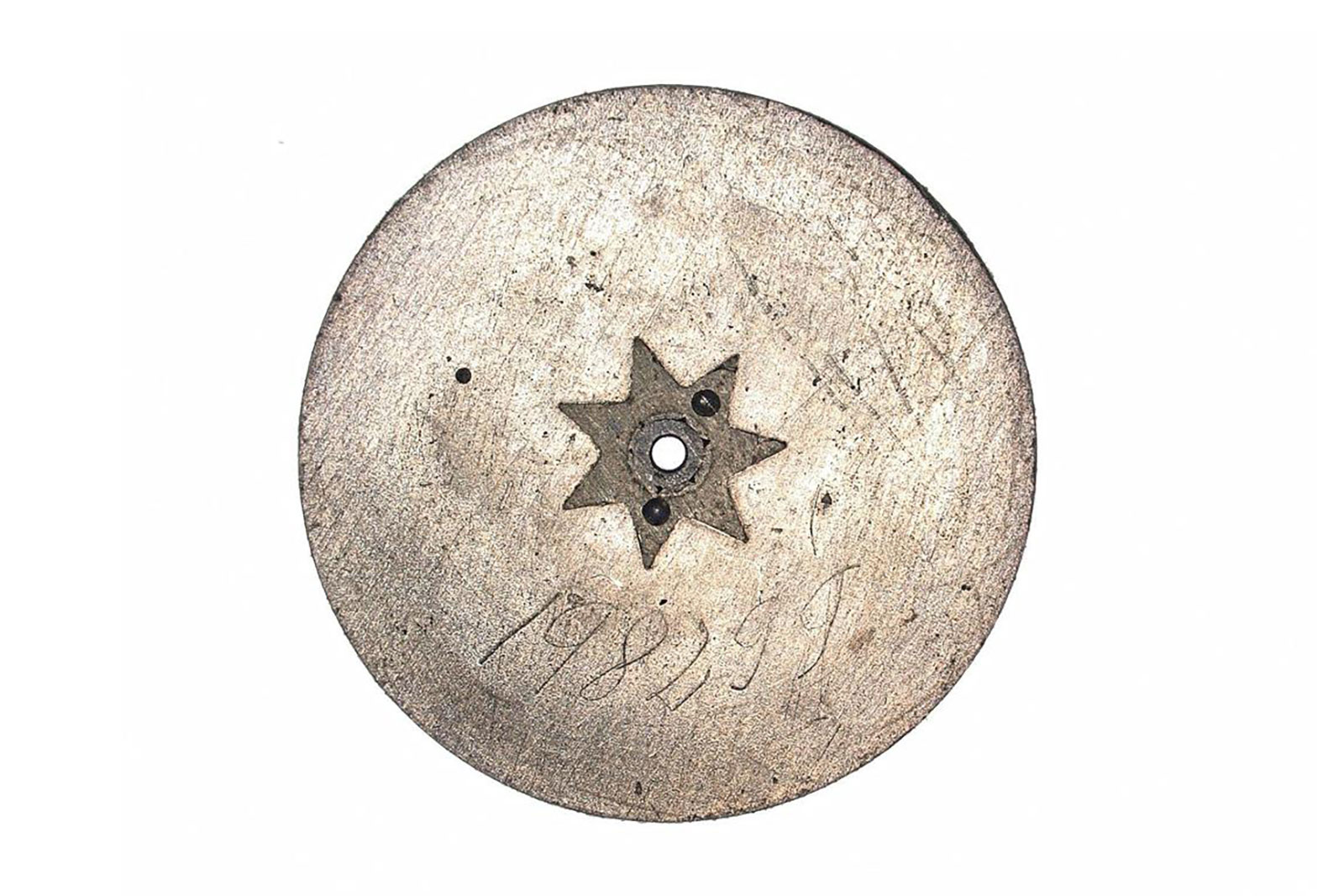
The Calatrava ref. 96QL has an estimate in excess of HK$25 million (or US$3.0 million). It will be sold on May 23 at 7:00 pm Hong Kong time (GMT+8). For more, visit Phillips.com.
Back to top.

